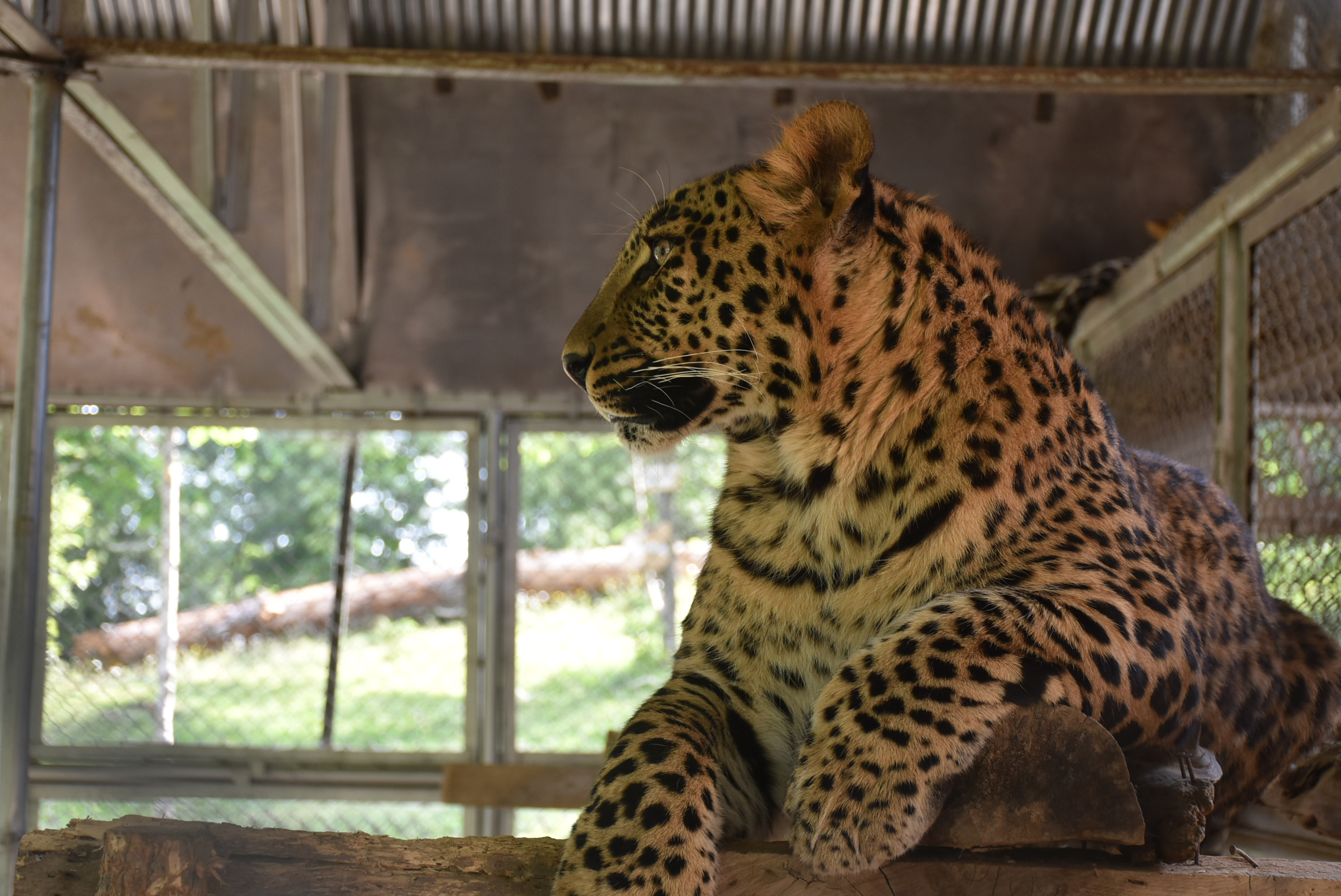Snow leopards in Pakistan face an emerging and a much serious threat. This time its climate change
Sajid Hussain is a field assistant associated with World Wide Fund for Nature-Pakistan (WWF-Pakistan). For over eight years, he has been involved in the field surveys for the conservation of common leopard (scientifically known as Panthera pardus) in Ayubia National Park. When the common leopard was radio collared for the first time in Pakistan, Sajid Hussain was there.
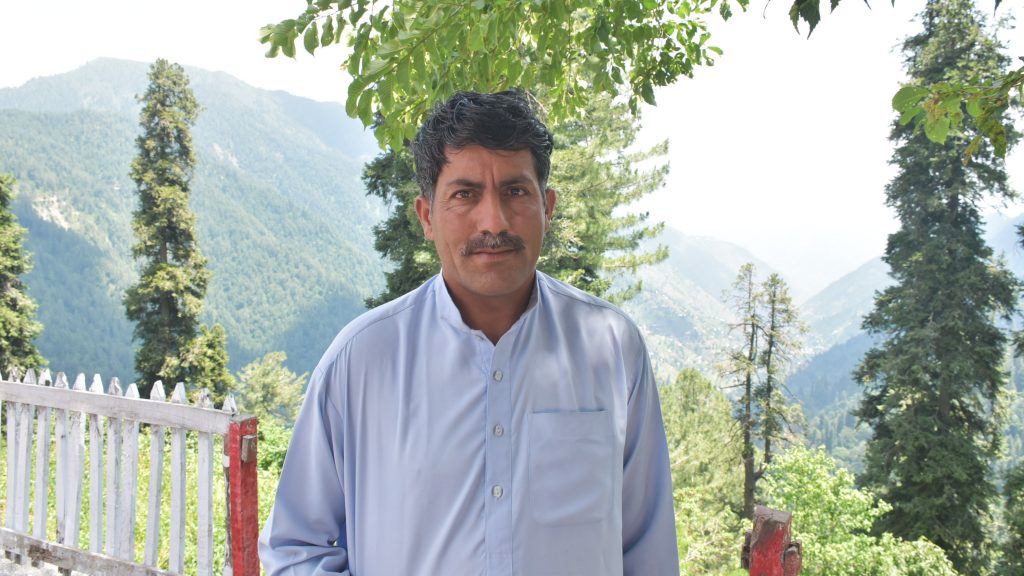
Sajid Hussain says, “WWF-Pakistan in collaboration with the provincial wildlife department of Khyber Pakhtunkhwa successfully trapped the common leopard and radio collared it. The collar provided useful information for about two years regarding the movement and territorial behavior of the common leopard.”
He further adds, “The common leopard is a territorial, nocturnal and shy animal, and prefers to live in forests. The animal has a long distribution range but due to burdening population and conversion of forest habitats for agriculture and settlement purposes, the common leopard habitat has shrunk and confined to Margalla Hills National Park, Murree, Galiat forest division, Mansehra, Azad Jammu and Kashmir (AJK), and some parts of Punjab.
But as the impacts of climate change in Pakistan take hold, it not just affects humans but wildlife as well. Sajid tells that on 24 October, 2017, WWF Pakistan’s Chitral office team member Saeed ul Islam captured a camera trap picture of a common leopard during snow leopard survey from Chitral Gol National Park. Chitral Gol National Park is situated close to Afghanistan border and is home to the snow leopard.
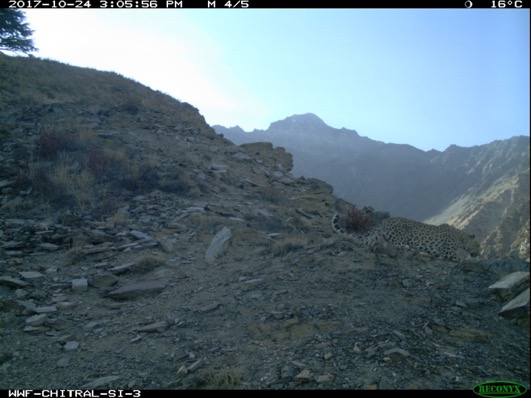
“We couldn’t believe that it was the camera trap photo of a common leopard captured in a prime snow leopard habitat,” Sajid adds, “The common leopard has never been reported in Chitral Gol National Park before.”
He shares that few of the field experts believe that it is probably due to climate change that the common leopard has intruded the snow leopard habitat. “There is a likelihood that the common leopard might have had come from the closest common leopard habitat but that is yet to be known.” He says, “The presence of common leopard in the snow leopard territory can be dangerous for the snow leopard due to its aggressive nature.”
The snow leopard has a wide habitat range of about 80,000km2 in Pakistan and mostly lives above the treeline. In the Hindu Kush range, it is found in Chitral district of Khyber Pakhtunkhwa, and in the Karakoram range it is found in Gilgit, Ghizer, Hunza-Nagar, Skardu and Ghanche districts. The Conservator Parks & Wildlife Department, Gilgit Baltistan, Mehmood Ghaznavi informs that the estimated population of the snow leopard in Gilgit Baltistan is around 200 individuals.
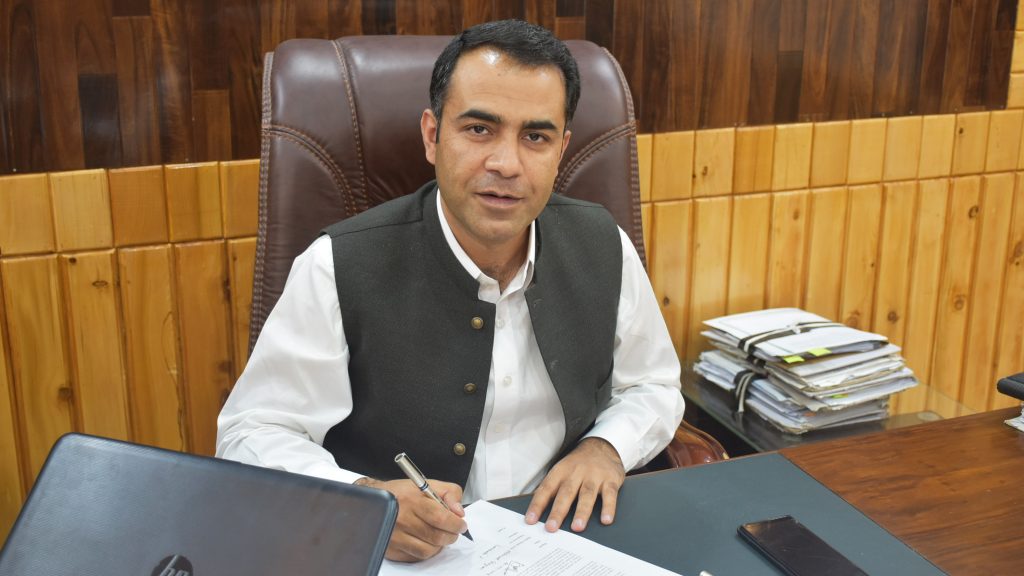
Ghaznavi confirms that the snow leopard is getting impacted by climate change. He says, “The habitat change of prey species such as the Himalayan ibex and Blue sheep, and changes in rainfall patterns are the major reasons behind it.”
He also refers to a recent incident in Ghizer district of Gilgit Baltistan, where six ibex died due to an avalanche. “Climate change is resulting into an increase in avalanches in the Hindu Kush Himalayan region of Pakistan. This not only affects the snow leopard prey but at times the snow leopard also gets killed by incoming avalanches,” says Ghaznavi.
The sighting of common leopard in snow leopard’s habitat is becoming more frequent than ever before. The remote Niandu village in China’s Qinghai province is a snow leopard stronghold. A video camera trap installed in the village in 2016 revealed the videos of snow leopard and common leopard using the same area.
The common leopard can be seen wandering around the area on July 14 and on July 29 the snow leopard visits the area and makes its presence using pug marks. The common leopard visits the area again on October 21 but this time she is accompanied by her cub.
Whereas in Pakistan, the presence of common leopard in Chitral Gol National Park – a snow leopard habitat isn’t the only incident, as another common leopard has been camera trapped in Passu valley, near Baltoro glacier.
Baltoro glacier, one of the longest glaciers outside the polar region, lies in the Karakoram range of Gilgit Baltistan. The Passu valley is a popular snow leopard habitat and every year tourists throng the valley with a hope to see the elusive snow leopard, also known as the “Ghost of the Mountains.”
It was until November 2017, when the locals of Passu village reported increased predation on their livestock. In this regard, Dr. Ali Nawaz, a senior ecologist in Pakistan refers to a camera trapping study in 2018 that they conducted to document the snow leopard population. He informs, “Our team went to several valleys of Hunza-Nagar districts, including Passu valley, Hoper valley, Hisper valley and Hussaini valley in Gilgit-Baltistan to install 46 camera traps across 3000 km2of rugged mountainous terrain to map snow leopard’s movements.”

Dr. Ali says, “In Passu valley we met a local guide who complained about increased snow leopard attacks on livestock in their village, which led us to install some camera traps there as well. To our surprise, the camera trap pictures revealed the presence of a common leopard in the area.” He adds, “From the same camera traps, we found out that the snow leopard was also using the same trail, which was striking for us.”
“On the same camera traps, the snow leopard was photo-captured on April 21, 2018, and April 22, 2018, whereas the common leopard was photo-captured on May 17, 2018. This indicates both species of leopards now share the same elevation of about 3000-3300 meters,” informs Dr. Ali.
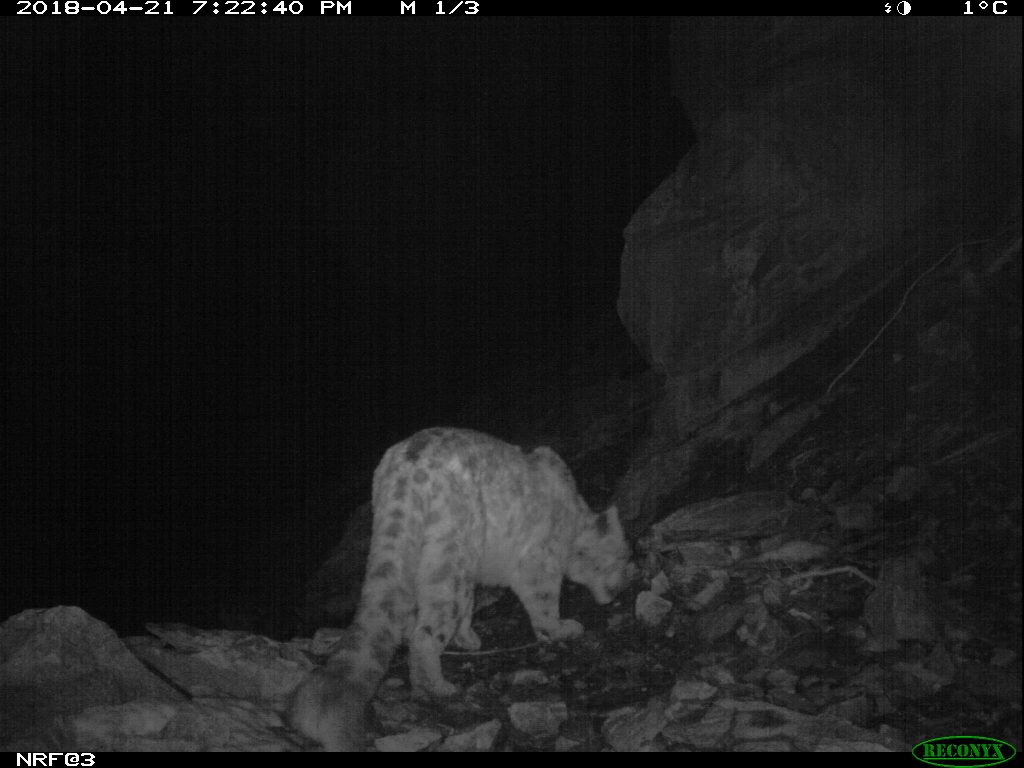
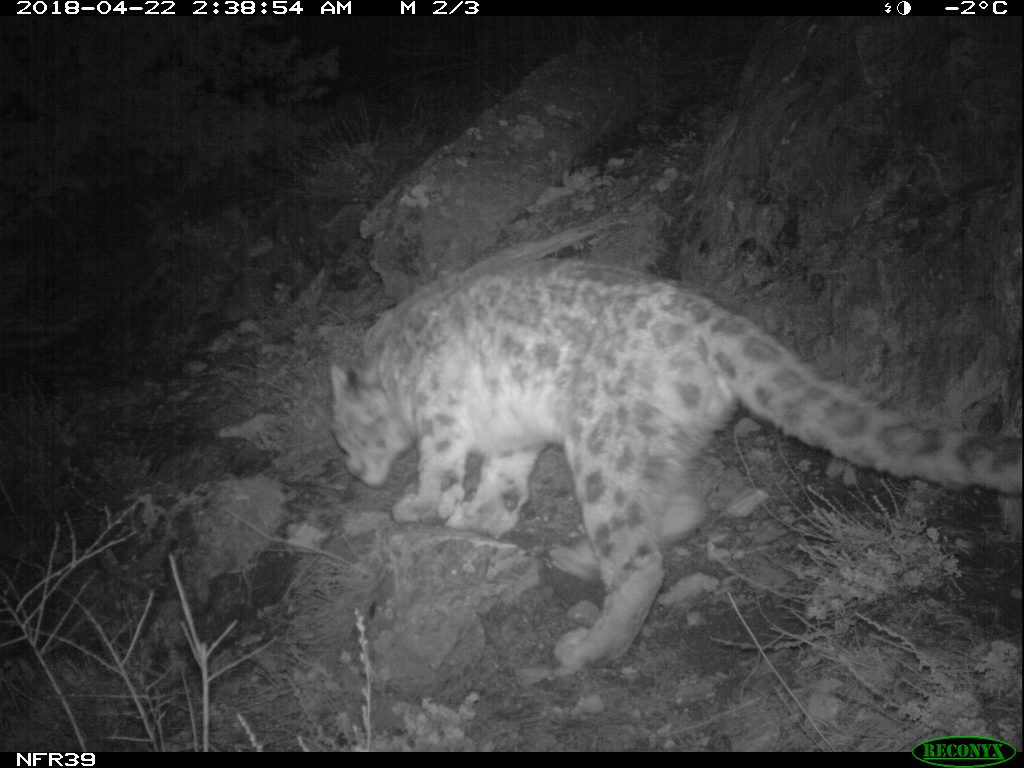
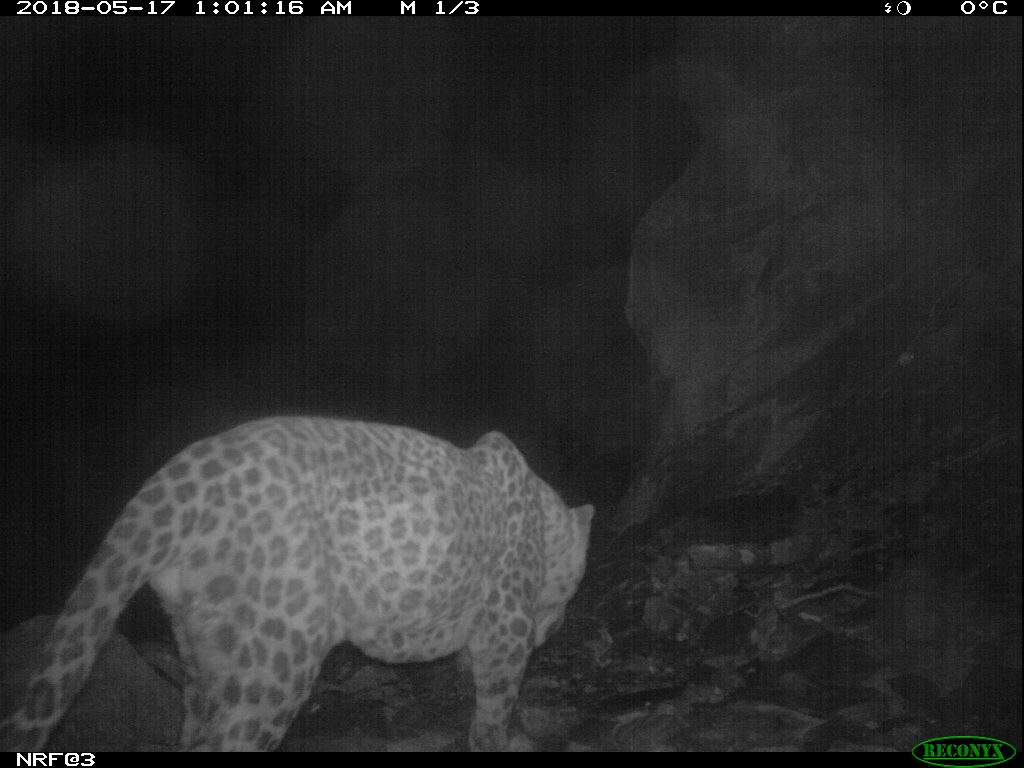
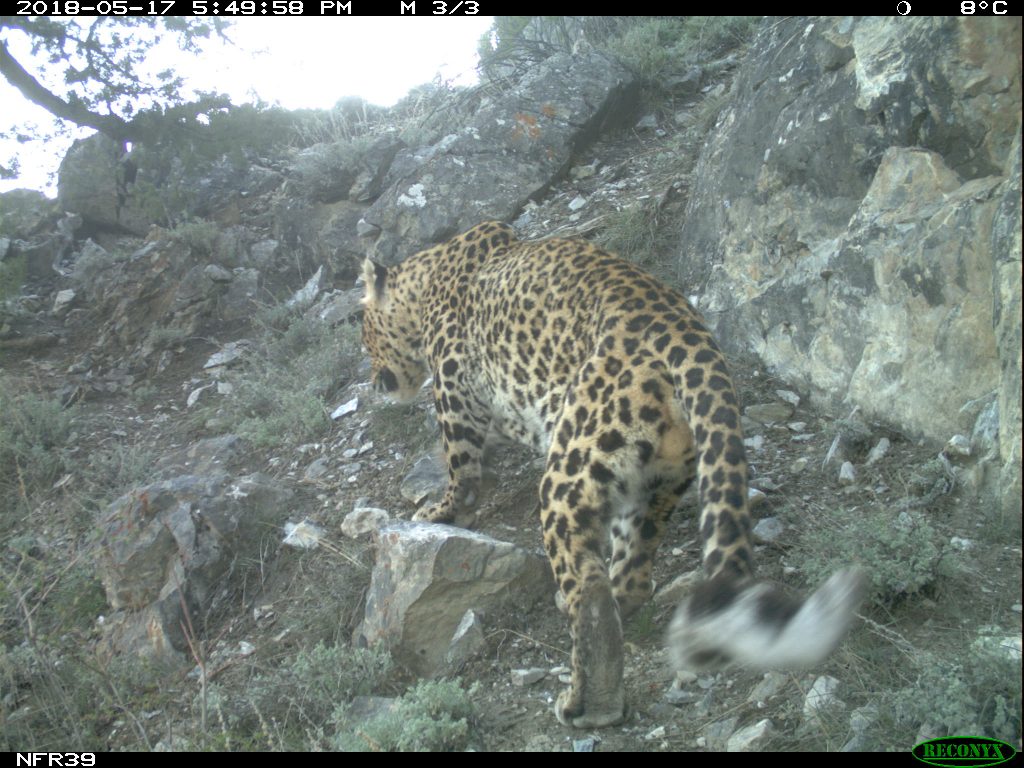
Looking at the map to find out where the common leopard could have possibly come from, Dr. Ali Nawaz points out to the Diamer district, which is the nearest common leopard habitat in Gilgit Baltistan.
“Diamer district is about 300-400 km away from the camera trapping site but these large cats can travel long distances. The surprising part however is the terrain, as Baltoro glacier is not home to the common leopard,” informs Dr. Ali.
In the opinion of Ashiq Ahmad Khan, a wildlife expert who won the prestigious 2016 Kenton Miller Award, “There seems to be no immediate threat to the survival of snow leopards, as the common leopard begins to intrude into its habitat.”
“Common leopards, mostly a predator of dogs, monkeys, poultry birds and smaller mammals may take years to adapt to the feeding habits of snow leopards that include larger prey animals such as Ibex, Markhor, Blue sheep and Marco polo sheep,” informs Ashiq.
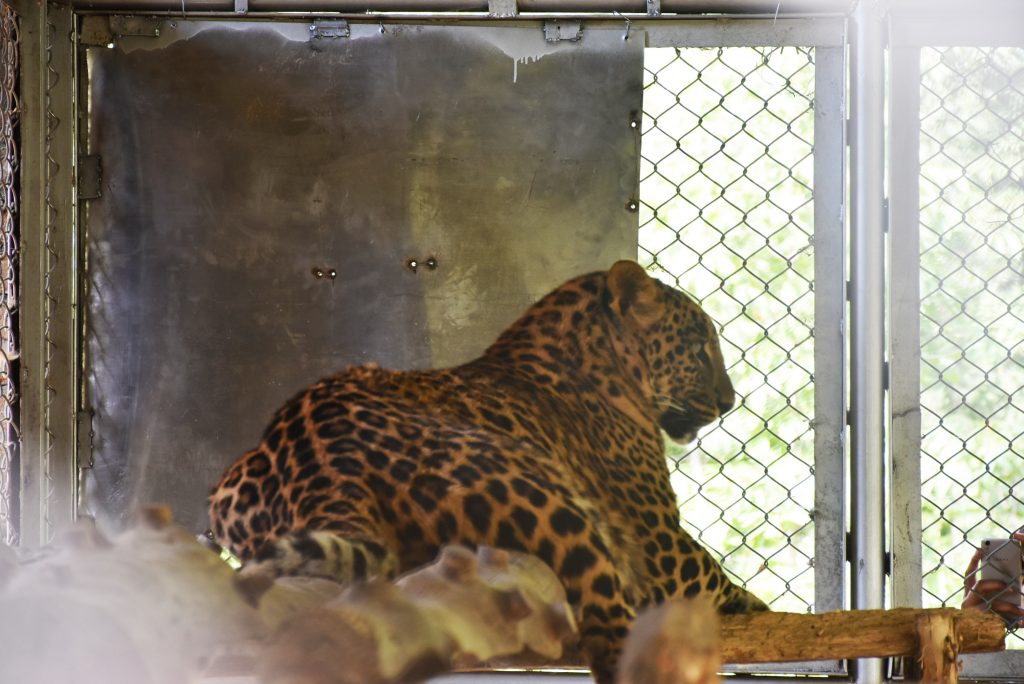
He shares that the survival of snow leopard can be threatened only if, “The common leopards are forced to leave their original habitat, increase their population, occupy snow leopard’s natural range and learn how to climb the rugged mountains to follow bigger prey species.”
But Dr. Ali Nawaz thinks differently. He says, “The common leopard is a stronger animal than the snow leopard, and it can push the snow leopard into marginalized habitats, where there is limited availability of prey. This may affect breeding capacity and long-term survival of the snow leopards.”
Snow leopard taking the blame
The snow leopard has been living in the snow-capped mountains and glaciated areas ever since. When it hunted peoples’ livestock, the communities knew that it was the snow leopard. The worst is yet to come, as the common leopard is more aggressive and hunts larger livestock including cows and buffaloes. The common leopard also has a long history of conflict with humans. In the summer of 2005, six women were killed by a single common leopard.
Dr. Ali Nawaz fears that the intrusion of common leopard in Passu valley may intensify human-snow leopard conflict. He shares, “In December 2017 and the following months, the Snow Leopard Foundation was receiving complaints from the locals of Passu valley regarding increased attacks on goats, sheep and even cows. People were thinking that the population of snow leopard has increased in the area.”
“But with the photographic capture of the common leopard in Passu valley, the whole puzzle was solved. It was actually the common leopard predating on peoples’ livestock. Since the people were unaware of it, the snow leopard was being blamed,” reveals Dr. Ali.
On the other hand, Ashiq Ahmad Khan argues that there is no immediate danger of extinction of snow leopards due to climate change. He says, “The unnatural deaths of snow leopards due to retaliatory killings by the mountain communities and by poachers for its skin and bones are the biggest threats they face in Pakistan.”
Dr. Ali Nawaz believes that the snow leopard is potentially threatened by range expansion of the common leopard. “In order to clearly assess the threat, it is important to know the exact population of the common leopard in snow leopard’s habitat.” He adds, “We have collected the fecal samples of the common leopard in Passu valley for genetic analysis, which will give a better understanding of the common leopard population in the valley.”
The co-existence of humans and wildlife is an evolutionary phenomenon. The arrival of common leopard in the snow leopard habitat is causing problems to the people. If the common leopard would make the snow leopard’s territory its new home, it will have to learn on how to survive without causing much harm to the local communities.
The climate-induced migration of the common leopard should be a wake-up call for the government. It signals that much worse is yet to come and that it is not merely a fight for territory between the snow leopard and the common leopard, but that the entire ecosystem of the Hindu Kush Himalayan region of Pakistan is at risk due to climate change.
